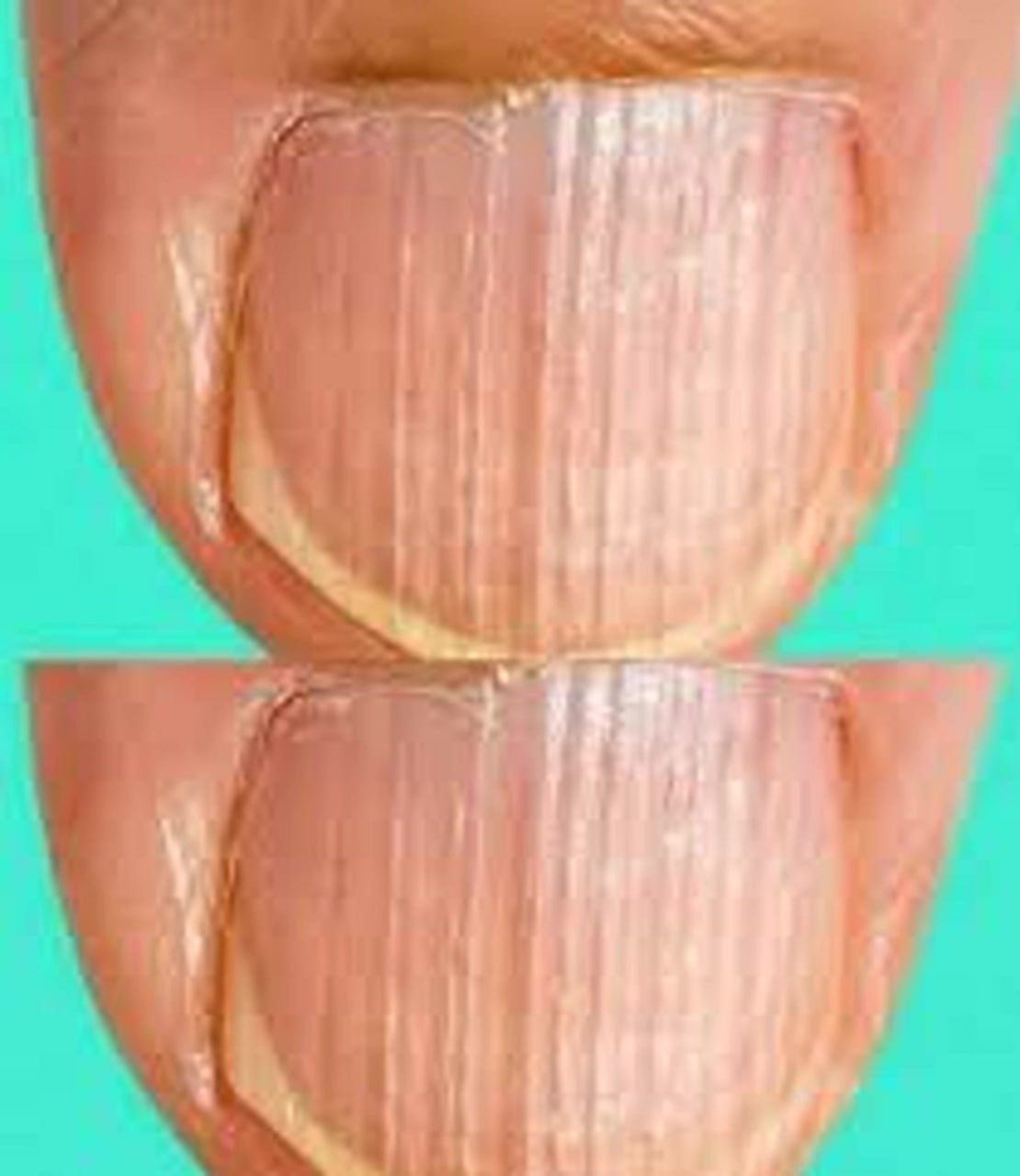3. Trauma
Injury to the nail bed or matrix can cause temporary discoloration or ridges. For instance, Beau’s lines often appear following physical trauma, surgery, or severe illness.
4. Systemic Health Conditions
Striped nails can sometimes be early indicators of systemic health problems, including:
- Kidney Disease: Muehrcke’s lines or half-and-half nails (a white portion near the cuticle and a darker area near the tip) might signal kidney issues.
- Liver Problems: White nails with pink or red stripes can be a symptom of liver disease.
- Cardiovascular Issues: Dark lines or splinter hemorrhages may indicate heart-related concerns.
5. Fungal Infections
Fungal infections can cause discoloration and thickening of the nails. Brown or yellow stripes are common signs of fungal nail infections.
6. Melanonychia
Dark, pigmented bands on the nails, known as melanonychia, can be benign but may also indicate melanoma, a form of skin cancer. If you notice dark stripes, especially if they are new or changing, consult a dermatologist promptly.
7. Medications
Certain medications, such as chemotherapy drugs, can cause changes in nail appearance. These effects are usually temporary and resolve once the treatment is completed.
Diagnosing Striped Nails
If you notice unusual stripes on your nails, it’s essential to consult a healthcare provider for an accurate diagnosis. Here are some steps typically involved in the evaluation:
- Medical History: Your doctor will ask about your health history, medications, and any recent illnesses or trauma.
- Physical Examination: They will examine your nails closely and may check other parts of your body for related symptoms.
- Laboratory Tests: Blood tests might be conducted to check for nutritional deficiencies or systemic conditions.
- Biopsy: In cases of melanonychia, a biopsy may be performed to rule out melanoma.
Preventing Nail Stripes
While some causes of striped nails are beyond your control, such as aging or genetic predisposition, others can be mitigated through proactive measures:
- Maintain a Balanced Diet: Include foods rich in vitamins, minerals, and proteins to support nail health.
- Practice Nail Hygiene: Keep nails clean, trimmed, and moisturized.
- Avoid Nail Trauma: Be gentle with your nails and avoid biting them.
- Monitor Medication Side Effects: Inform your doctor about any changes in nail appearance during treatment.
- Regular Checkups: Visit a healthcare provider regularly to catch potential health issues early.
When to Seek Medical Attention
While striped nails are often harmless, certain signs warrant medical attention:
- Sudden Appearance: If stripes appear suddenly without an apparent cause.
- Dark Stripes: Especially if they are uneven, widening, or associated with pain.
- Additional Symptoms: Such as fatigue, weight loss, or changes in skin or hair.
Conclusion
Your nails can be a vital clue to your overall health, and paying attention to changes like stripes can help you catch potential issues early. While some causes of striped nails are benign, others may require medical intervention. By staying vigilant and maintaining a healthy lifestyle, you can ensure both your nails and your body remain in optimal condition. If in doubt, consult a healthcare professional to assess your nail health and provide appropriate guidance.

